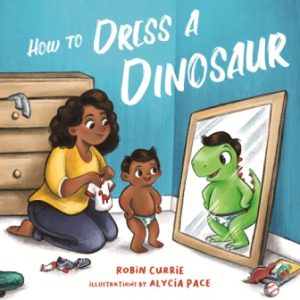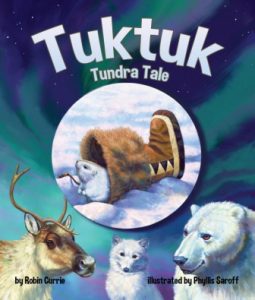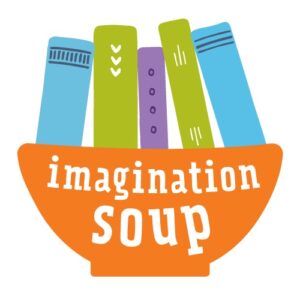Research for 181 words?
Research and back matter have never been more important. Reviewers and consumers have access to information to check out the accuracy of everything they read to children. Picture books, board books, and read-aloud stories, if they include facts, need to be researched before sending to editors. Editors often hire subject specialists to confirm accuracy.
Research for a Board Book.
ABC books are easy – if you can think of words for Q and X that kids recognize! Same with counting books if the point is just the number of objects. But if, for example, you choose a subject like trains or fruits…or dinosaurs? Research!

How to Dress a Dinosaur: Ah, this is where I found out that what I thought I knew about dinosaurs was not too wrong but outdated. Dinos have newer fancier names, and many have been reclassified. Some have even been discontinued! From stegosaurus and ankylosaurus, I tracked ten different dinos to make sure they had the body parts I referred to, lived in the zones I indicated, and would do the things I planned.
Research for a fiction picture book.
Kids will listen to “talking bear” stories, recognizing that the animals are behaving like people. But if one of the bears suddenly starts saying “moo” credibility is strained. The closer animals are to real animals, the more the setting, behavior, and interactions with others must be bear-like.

Tuktuk: Tundra Tale features talking animals but in all other ways they behave as arctic animals would as they get ready for winter. Spoiler alert: There are no penguins at the North Pole! And there are many Inuit words for snow. Even though it was a fiction story, factual backmatter on arctic animals, landforms, and sky signs was required and vetted.
Research for a nonfiction picture book.
This is becoming an increasingly popular area, particularly for sales to public libraries and schools. Every word, every detail, and every art suggestion must be completely accurate. And a list of resources cannot include Wikipedia!

My next book is coming in 2025, but I am still waiting for a publisher to find the illustrator before they announce it! My research started on site, in the location where the story takes place, and based on the stories and facts the rangers and guides conveyed. Still, every detail, every fact, must be confirmed – not that rangers are EVER wrong, but I might have misheard!
Research other titles.
One last round of research – the ever-shifting comp titles. These are the other books that face the potential buyer – in the bookstore or the catalog. What will be your competition (in 2025 or 2026!) on the same subject, theme, school unit, or story time?
Back to the dinosaur books, there are tons of them. Occasionally the market is glutted! But I also had to research books on teaching your child to get dressed, typical preschool clothing, the language skills of a child at the age he learns to get dressed, and the patience of parents. One resource for book lists is “Imagination Soup” by Melissa Taylor.

Research: why the librarian is your best source of credible information!

No surprise: Multi-award-winning author Robin Currie holds a Master of Library Science from the University of Iowa and learned story sharing by sitting on the floor during more than 1000 story times! She sold 1.7 M copies of her 40 storybooks and writes stories to read and read again!


 We love helping your growing in your writing career.
We love helping your growing in your writing career.

No Comments